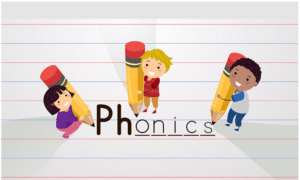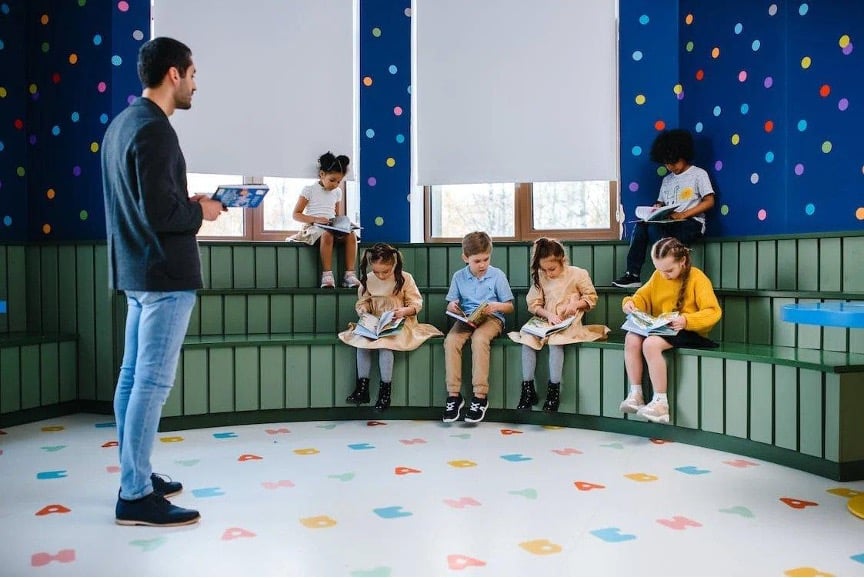Empowering Struggling Readers: Strategies to Foster Reading Success
 For children who struggle with reading, the journey to literacy can be challenging. However, with the right support and strategies, struggling readers can develop the skills and confidence they need to become proficient readers. In this article, we will explore effective ways to help struggling readers overcome obstacles and unlock the joy of reading. By implementing these strategies at home or in the classroom, we can provide the necessary support and encouragement to empower struggling readers on their path to reading success.
For children who struggle with reading, the journey to literacy can be challenging. However, with the right support and strategies, struggling readers can develop the skills and confidence they need to become proficient readers. In this article, we will explore effective ways to help struggling readers overcome obstacles and unlock the joy of reading. By implementing these strategies at home or in the classroom, we can provide the necessary support and encouragement to empower struggling readers on their path to reading success.
Individualized Instruction:
Recognize that every struggling reader is unique, and tailor instruction to their specific needs. Assess their strengths and weaknesses and create a personalized learning plan. Provide targeted interventions and scaffolded support to address their areas of difficulty, such as decoding, fluency, or comprehension. Utilize differentiated instruction, multisensory techniques, and assistive technologies to meet their individual needs.
Phonics Instruction:
Phonics instruction is crucial for struggling readers. Teach phonics explicitly, breaking down the sounds and letter-sound relationships. Help them build a strong foundation in phonemic awareness and phonics skills, enabling them to decode words and improve their reading fluency.
Reading Support:
Offer ample opportunities for practice and reading support. Provide a variety of engaging, leveled reading materials that match their interests and reading abilities. Encourage regular independent reading, both in and out of school. Implement reading strategies such as guided reading, shared reading, or buddy reading to support comprehension and build confidence.
Vocabulary Development :
Expand struggling readers' vocabulary by incorporating explicit vocabulary instruction. Teach new words in context, provide definitions, and encourage word exploration. Use visual aids, context clues, and word games to deepen their understanding of word meanings. Foster a love for words and language through wordplay and engaging activities.
Reading Motivation:
Nurture a positive reading environment and cultivate a love for reading. Allow struggling readers to choose books that interest them. Celebrate reading achievements and provide incentives to motivate their reading efforts. Read aloud to them regularly to expose them to rich language and storytelling. Engage in discussions about books, characters, and plots to develop their critical thinking skills and deepen comprehension.
Supportive Environment:
Create a supportive and non-judgmental environment for struggling readers. Encourage risk-taking and provide constructive feedback. Celebrate their progress and acknowledge their efforts. Foster a growth mindset, emphasizing that mistakes are part of the learning process.
Collaboration and Communication:
Maintain open lines of communication between teachers, parents, and other stakeholders involved in supporting struggling readers. Collaborate to ensure consistency in strategies and interventions across home and school environments. Share progress, concerns, and strategies to provide holistic support and promote reading success.
Conclusion:
Helping struggling readers requires patience, empathy, and a tailored approach. By providing individualized instruction, emphasizing phonics, supporting reading practice, building vocabulary, nurturing motivation, fostering a supportive environment, and promoting collaboration, we can empower struggling readers to overcome obstacles and achieve reading success. Remember, every child's reading journey is unique, and progress may vary. With consistent support and a belief in their potential, struggling readers can develop into confident, lifelong readers who can access the transformative power of literacy.

 National School Library Week is an annual celebration that shines a spotlight on the vital role school libraries play in promoting literacy, fostering a love for reading, and supporting student success. This week-long event, observed across the United States, acknowledges the dedicated librarians, educators, and advocates who ensure students have access to a rich array of resources and opportunities for intellectual growth. In this article, we will explore the significance of National School Library Week, the benefits of school libraries, and ways to engage in this exciting celebration that empowers students and enriches their educational journey.
National School Library Week is an annual celebration that shines a spotlight on the vital role school libraries play in promoting literacy, fostering a love for reading, and supporting student success. This week-long event, observed across the United States, acknowledges the dedicated librarians, educators, and advocates who ensure students have access to a rich array of resources and opportunities for intellectual growth. In this article, we will explore the significance of National School Library Week, the benefits of school libraries, and ways to engage in this exciting celebration that empowers students and enriches their educational journey. Phonics refers to the systematic instruction of the relationship between sounds and the letters or groups of letters that represent them. It involves teaching children how to connect individual sounds (phonemes) with specific letters or letter combinations (graphemes). Phonics instruction helps children understand the correspondence between spoken and written language, enabling them to decode words and read fluently.
Phonics refers to the systematic instruction of the relationship between sounds and the letters or groups of letters that represent them. It involves teaching children how to connect individual sounds (phonemes) with specific letters or letter combinations (graphemes). Phonics instruction helps children understand the correspondence between spoken and written language, enabling them to decode words and read fluently.
 Reading is one of the most important skills a child can learn, and it’s never too early to start. As an experienced educator with a background in elementary education, I’ve seen the impact that simple, fun activities can have on a child’s reading development. In this article, I’ll be sharing 10 simple steps that parents can try at home to help their child learn to read.
Reading is one of the most important skills a child can learn, and it’s never too early to start. As an experienced educator with a background in elementary education, I’ve seen the impact that simple, fun activities can have on a child’s reading development. In this article, I’ll be sharing 10 simple steps that parents can try at home to help their child learn to read. Helping your child learn to read is an important and exciting journey. Here are some tips to support your child's reading development:
Helping your child learn to read is an important and exciting journey. Here are some tips to support your child's reading development:
